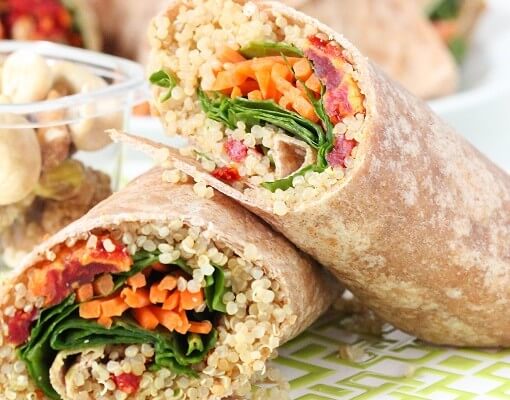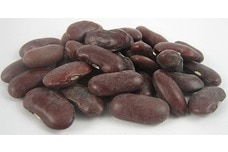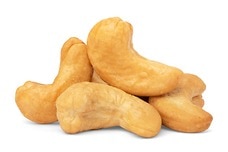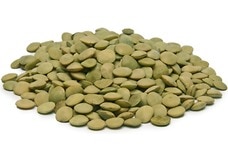Iron
Our bodies depend on trace levels of certain minerals to maintain optimal health. Iron is one of the most important of these dietary minerals, helping oxygen reach every cell in our bodies. Getting enough iron is essential to help your cardiorespiratory system thrive.
What Is Iron?
Iron is a chemical element found in all living organisms. The iron in your body is the same type of element that is found in iron ore or that is used to make tools. There are two types of iron that can be obtained through the diet: heme and non-heme iron.
Heme vs. Non-Heme Iron
Heme iron is a molecule of iron that has been bound to cofactors to create a special compound (Wessling-Resnick, 2009). Heme has special properties that make it important for physiological functioning. Non-heme iron is not similarly bound to heme proteins, which means that it does not have these same special properties.
The primary difference between heme and non-heme iron is how they are absorbed by the body. Your body absorbs heme iron at a much higher rate than non-heme iron (Hallburg, Brune, & Rossander, 1989). This has important implications for how you should reach your daily dietary intake of iron.
Physiological Effects of Iron in the Human Body
Iron plays numerous roles in the body, but perhaps its most important is in the circulatory system. Red blood cells, which are responsible for carrying oxygen throughout the body, contain a protein called hemoglobin. As its name suggests, hemoglobin contains heme iron and represents about 67% of the body’s iron supply (Wessling-Resnick, 2009).
Hemoglobin is responsible for picking up oxygen molecules in the lungs and transporting them to various tissues in the body. Without hemoglobin, our cells would be unable to get the oxygen needed to survive. Heme iron also plays an important role in chemical signalling, enzyme reactions, and the synthesis of new DNA.
Recommended Daily Intake of Iron
The National Institutes of Health (2016) recommend the following dietary allowance for iron:
- Adult men of any age need 8 mg of iron per day.
- Adult women aged 19 to 50 need 18 mg daily.
- Adult women over age 51 need 8 mg of iron per day. During the menopausal transition, decreases in levels of the hormone estrogen cause women’s iron levels to increase (Jian, Pelle, & Huang, 2009). Thus, postmenopausal women have a lower need for dietary iron. Iron supplements are typically not recommended for this age group, although it is important to talk to your doctor to determine what supplements are appropriate for you.
- Iron needs change during pregnancy and breastfeeding. Pregnant women should aim to get 27 mg of iron per day, while lactating women need 9 mg per day.
In the United States, iron deficiency is generally uncommon (NIH, 2016). Although, failure to get enough iron overtime can result in anemia, which is characterized by fatigue, rapid breathing, heart palpitations, and weakness (Mayo Clinic, 2014).
Ways to Ensure You Get the Iron You Need
People with certain diets, such as vegetarians or vegans, may have difficulty meeting their daily intake of iron. Our bodies more easily absorb heme iron, which is found in animal sources. Non-animal sources exclusively contain non-heme iron, which is less well absorbed. Thus, vegetarians and vegans must be vigilant about their iron intake. Vegetarians may need up to 1.8 times more iron than non-vegetarians to make up for the difference in heme versus non-heme iron (Mangels, 2014).
Fortunately, there are numerous common plant foods that are very high in iron, allowing vegetarians and vegans to get enough of this mineral. A healthy, balanced vegetarian diet should include soybeans, lentils, leafy green vegetables, and beans to promote healthy iron levels (Mangels, 2014). For omnivores, eating even a small amount of lean protein every day can increase your heme iron consumption. It is also important to eat plenty of leafy green vegetables, beans, and other plant sources of iron.
If you primarily receive dietary iron through plant sources, there are ways to increase absorption of non-heme iron. In particular, consuming the mineral with vitamin C has been shown to increase non-heme iron absorption (Hallberg, Brune, & Rossander, 1989).
While dietary supplements for iron are available, it is preferential to get iron from natural food sources. Iron supplements contain non-heme iron, meaning that they are more difficult for the body to absorb. If you do take an iron supplement, take it on an empty stomach or with a small amount of food to improve absorption (Martin, 2015). Taking an iron supplement with fiber- or calcium-rich foods can inhibit its absorption. Thus, it is best to avoid eating whole grain products, milk, or calcium supplements at the same time as an iron supplement (Martin, 2015).
Iron-Rich Recipes
Below are a few recipes and snack sources of this essential mineral. For a more robust list of recipes and snacks, check out our article on food and snack sources of iron here.

Quinoa Tabbouleh Salad Recipe {gluten-free}
A simple salad that supplies a whopping 88% of the Daily Value (DV) for iron, this recipe is also a source of protein, fiber, vitamin C, and other essential nutrients.
Ingredients: Quinoa, cherry tomatoes, red onion, cucumber, extra virgin olive oil, balsamic vinegar, fresh parsley, fresh mint, black pepper, salt.
Total Time: 40 minutes
| Yield: 4 servings

Quinoa Veggie Wrap Recipe {vegan}
This wrap makes a perfect snack between meals or to complement other simple sides for a delectable lunch. Each wrap provides 70% of the DV for iron as well as plenty of fiber, protein and vitamin A.
Ingredients: Tortilla wraps, quinoa, hummus, fresh spinach, sun-tomatoes, shredded carrots.
Total Time: 30 minutes
| Yield: 4 wraps
Food & Snack Sources of Iron
The snacks below supply an easy way to add iron to your diet between meals. For more foods that contain the mineral, check out our article on food and snack sources of iron.
Healthy Eating
- Healthy Snacks
- Healthy Highlights
- 5 Uses for Cacao Powder
- 5 Ways to Eat Farro
- 6 Best Gluten-Free Foods
- Alcohol and the Body
- Almond Flour Recipes
- Anti-Aging Superfoods
- Beat the Afternoon Slump
- Benefits of a Plant-Based Diet
- Benefits of Baobab
- Benefits of Cashews
- Benefits of Coconut Oil for Hair
- Benefits of Coconuts
- Benefits of Dates
- Benefits of Fenugreek
- Benefits of Garcinia Cambogia
- Benefits of Goji Berries
- Benefits of Kale Chips
- Benefits of Monk Fruit Sweetener
- Benefits of Peanuts
- Benefits of Pecans
- Benefits of Pistachios
- Benefits of Pumpkin Seeds
- Benefits of Spelt Flour
- Benefits of Steel Cut Oats
- Benefits of Sunflower Seeds
- Benefits of Tiger Nuts
- Benefits of Turmeric
- Benefits of Walnuts
- Benefits of Wheatgrass
- Best Food Fads
- Cacao vs Cocoa
- Caffeine-Free Energy Foods
- Chocolate That's Good for You
- Diet vs. Exercise
- Fat Burning Foods
- Food Myths Debunked
- Foods for Bone Density
- Foods for Colon Health
- Foods for Healthy Hair
- Foods for Healthy Skin
- Foods to Help Sleep
- Foods to Reduce Stress
- Green Tea Benefits
- Healthy Baking Flours
- Heart Healthy Habits
- High Protein Health Risks
- How to Boost Your Metabolism
- How to Lose Weight While Aging
- How to Throw a Vegan BBQ
- Kaniwa vs Quinoa
- Little Health Foods
- Low-Carb: Fad or Friend?
- Making Healthier Desserts
- Mediterranean Diet Meal Plan
- Natural Beauty Products
- Nuts for Weight Loss
- Preparing Vegan Meals
- Preventing Muscle Degeneration
- Rare Superfoods
- Reduce Sugar Intake
- Save Time By Going Vegan
- Smarter Snack Swaps
- Smoothie Ingredients
- Soy Protein vs Whey Protein
- Starting a Plant-Based Diet
- Steel Cut vs Rolled Oats
- Sugar Substitutes
- Vegan Proteins
- Vegan Substitutions for Fall Recipes
- Why Go Vegan
- Healthy Meals
- Healthy Recipes
- Sports Nutrition
- Nutrition and Special Diets
- 21 Day Fix
- 5 Popular Diet Similarities
- Alkaline Diet
- Anti-Inflammatory Diet
- Calorie Counting
- Carb Cycling Diet
- Celiac Disease
- Cholesterol
- Clean Eating
- Crohn's Disease
- DASH Diet
- Detox Diet
- Diabetes
- Diabetes Diet
- Diet Pill Dangers
- Fat Burning Foods
- Gluten-free Diet
- Glycemic Index
- Heart Health
- High Blood Pressure Diet
- High Fiber Foods
- How to Eat Healthy
- How to Lower Blood Pressure
- Hypertension
- IBS Diet
- Ketogenic Diet
- Liquid Diet
- Low GI Foods
- Low-Carb Diet and Foods
- Low-Fat High-Carb Diet
- Mediterranean Diet
- Mediterranean Diet Foods
- Military Diet
- Nutrition Labels Explained
- Paleo Diet
- Raw Food Diet
- Superfoods
- Sustainable Weight Loss
- Thrive Diet
- Vegan Diet
- Vegetarian Diet
- Weight Loss Shakes
- Whole30



